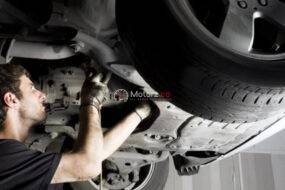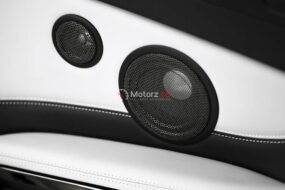Headlight Restoration Restore cloudy headlights. In the realm of automotive maintenance, one often overlooked yet crucial aspect is the condition of headlights. Over time, exposure to various environmental elements can cause headlights to become cloudy and dull, significantly reducing their effectiveness. Not only does this diminish the aesthetics of a vehicle, but it also poses safety risks due to reduced visibility on the road. Fortunately, headlight restoration is a cost-effective solution to revive these cloudy headlights and enhance both the appearance and safety of your vehicle.
Causes of Cloudy Headlights:
Before delving into the restoration process, it’s essential to understand why headlights become cloudy in the first place. The primary culprit is prolonged exposure to ultraviolet (UV) rays from the sun. These rays break down the protective layer of the headlights, leading to oxidation and a hazy appearance. Additionally, environmental factors such as pollution, road debris, and harsh weather conditions contribute to the degradation of the headlight’s clarity over time.
The Impact on Visibility and Safety:
Cloudy headlights can significantly compromise visibility, especially during nighttime driving or adverse weather conditions. The diminished brightness and scattered light patterns can reduce the distance at which a driver can see obstacles on the road. This not only poses a danger to the vehicle’s occupants but also to other motorists and pedestrians. Hence, addressing cloudy headlights is not merely a cosmetic concern but a crucial safety measure.
Headlight Restoration Methods:
There are various methods to restore cloudy headlights, ranging from DIY home remedies to professional services. Here are some common approaches: Many automotive retailers offer DIY headlight restoration kits. These kits typically include abrasive compounds, sandpaper, and polishing agents. While they can be effective, it’s crucial to follow the instructions carefully to avoid causing further damage to the Flickering headlights.
Toothpaste Technique:
A household remedy involves using toothpaste as a polishing agent. By applying toothpaste to the headlights and rubbing it in a circular motion, the abrasive particles in the toothpaste can help remove the cloudy layer. However, this method may provide only temporary improvement. For a more lasting and professional solution, many auto detailing and repair shops offer headlight restoration services. These services often involve the use of specialized equipment, polishing compounds, and protective coatings to ensure a thorough and long-lasting restoration.
Improved Visibility:
The most obvious benefit of headlight restoration is the improvement in visibility. Clear headlights ensure that the road ahead is well-lit, reducing the risk of accidents and enhancing overall safety. Restoring cloudy headlights can have a significant impact on the aesthetics of a vehicle. Clear, well-maintained headlights contribute to the overall appeal and resale value of the car.
Cost-Effective Alternative:
Compared to replacing the entire headlight assembly, restoration is a cost-effective alternative. It allows car owners to achieve like-new clarity without the expense of purchasing new headlights. Choosing restoration over replacement is also environmentally responsible. It reduces the amount of waste generated from discarded headlight assemblies and promotes sustainability in automotive maintenance.
Conclusion:
In conclusion, Headlight Restoration is a vital aspect of vehicle maintenance that goes beyond cosmetic concerns. Cloudy headlights not only compromise the aesthetics of a vehicle but, more importantly, pose safety risks due to reduced visibility. Whether opting for a DIY approach or seeking professional services, restoring cloudy headlights is a cost-effective and environmentally friendly solution. By investing in headlight restoration, car owners can ensure optimal visibility, enhance the overall appearance of their vehicles, and contribute to safer roads for everyone.





